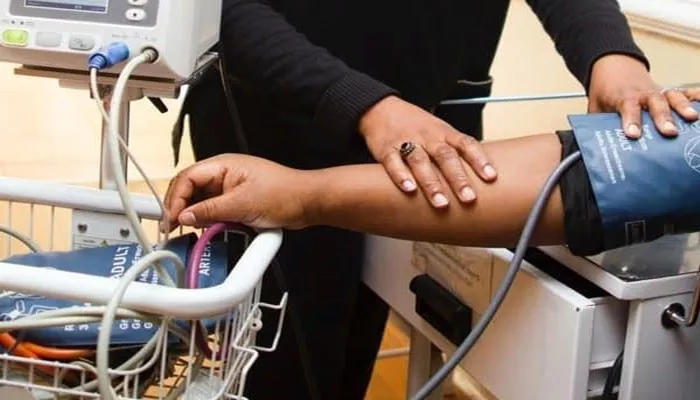Orthostatic hypotension, also known as postural hypotension, is a form of low blood pressure that happens when you stand up from sitting or lying down. This condition can cause dizziness, lightheadedness, and even fainting, and it can be particularly concerning if it happens frequently. Managing orthostatic hypotension often involves lifestyle changes and home remedies that can help stabilize blood pressure. In this article, we will explore five effective home remedies to manage and alleviate the symptoms of orthostatic hypotension.
The 5 Home Remedies for Orthostatic Hypotension
1. Increase Fluid Intake
Staying hydrated is crucial for maintaining healthy blood pressure levels. Dehydration can reduce blood volume, leading to a drop in blood pressure. Here are some tips to ensure adequate fluid intake:
Drink Water Regularly: Aim for at least eight glasses of water per day. Drinking small amounts frequently throughout the day can be more effective than consuming large amounts at once.
Electrolyte-Rich Beverages: Incorporate drinks that contain electrolytes, such as sports drinks, coconut water, or oral rehydration solutions, especially if you are sweating excessively or experiencing diarrhea.
Avoid Alcohol: Alcohol can dehydrate the body and exacerbate symptoms of orthostatic hypotension. Limiting or avoiding alcohol consumption is advisable.
Monitor Caffeine Intake: While caffeine can temporarily raise blood pressure, it can also lead to dehydration. Balance your caffeine consumption with plenty of water.
see also: How to Differentiate And Diagnose Postural Hypotension
2. Adjust Your Diet
Diet plays a significant role in managing orthostatic hypotension.
Certain dietary adjustments can help stabilize blood pressure levels and reduce symptoms:
Increase Salt Intake: Salt helps retain water in the body, which can increase blood volume and pressure. However, consult with a healthcare provider before making significant changes to your salt intake, especially if you have other health conditions.
Frequent, Small Meals: Eating smaller, more frequent meals can prevent blood pressure from dropping too low after eating. Avoid large, heavy meals that can divert blood to the digestive system.
Include Potassium-Rich Foods: Potassium helps balance sodium levels in the body. Foods like bananas, oranges, spinach, and sweet potatoes are excellent sources of potassium.
Avoid Processed Foods: Processed and sugary foods can cause rapid fluctuations in blood pressure. Opt for whole foods and a balanced diet to maintain steady blood pressure levels.
3. Exercise Regularly
Regular physical activity can improve blood circulation and strengthen the cardiovascular system, which helps manage orthostatic hypotension. Here are some exercise tips:
Start Slowly: Begin with gentle exercises like walking, swimming, or cycling. Gradually increase the intensity and duration as your fitness level improves.
Focus on Leg Strengthening: Exercises that strengthen the leg muscles, such as squats and calf raises, can help improve blood flow back to the heart and reduce symptoms.
Hydrate Before and After Exercise: Ensure you drink plenty of water before, during, and after physical activity to prevent dehydration.
Avoid Sudden Position Changes: When exercising, avoid sudden changes in position that can cause a rapid drop in blood pressure. For example, move slowly from sitting to standing.
4. Compression Stockings
Compression stockings can be an effective home remedy for orthostatic hypotension. These stockings apply pressure to the legs, helping to improve blood flow and prevent blood from pooling in the lower extremities. Here’s how they work:
Types of Compression Stockings: There are various types, including knee-high, thigh-high, and full-length stockings. The level of compression also varies, so it’s important to choose the right type for your needs.
When to Wear Them: Wear compression stockings during the day, especially when standing for long periods. Remove them at night to allow your skin to breathe.
Proper Fit: Ensure the stockings fit properly. Ill-fitting stockings can cause discomfort and may not provide the desired benefits. Consult with a healthcare provider for a proper fitting.
Gradual Use: If you’re new to compression stockings, start by wearing them for a few hours each day and gradually increase the duration as you get used to them.
5. Lifestyle Modifications
Several lifestyle modifications can help manage orthostatic hypotension and improve overall well-being:
Elevate the Head of Your Bed: Raising the head of your bed by about 4 to 6 inches can help reduce symptoms upon waking.
This position helps prevent blood from pooling in your legs while you sleep.
Move Slowly When Changing Positions: Take your time when moving from lying down to sitting, and from sitting to standing. This gradual movement allows your body to adjust and can prevent a sudden drop in blood pressure.
Avoid Prolonged Standing: If possible, avoid standing still for long periods. If you must stand, shift your weight from one foot to the other or move your legs to encourage blood flow.
Wear Loose Clothing: Tight clothing can restrict blood flow and exacerbate symptoms. Opt for loose, comfortable clothing to ensure good circulation.
Limit Heat Exposure: Hot environments can cause blood vessels to dilate, leading to a drop in blood pressure. Stay cool by wearing lightweight clothing and using fans or air conditioning.
Conclusion
Managing orthostatic hypotension often involves a combination of home remedies and lifestyle changes. Increasing fluid intake, adjusting your diet, regular exercise, using compression stockings, and making lifestyle modifications can significantly help in stabilizing blood pressure and reducing symptoms. It’s important to consult with a healthcare provider before making significant changes to your routine, especially if you have other underlying health conditions.

